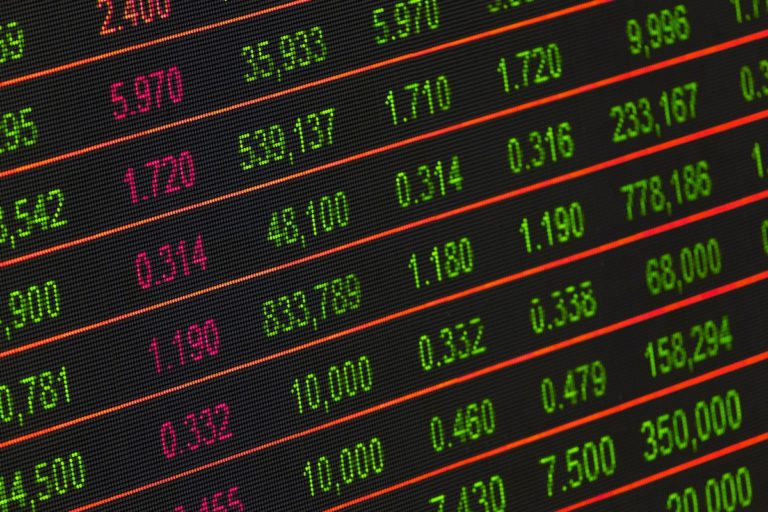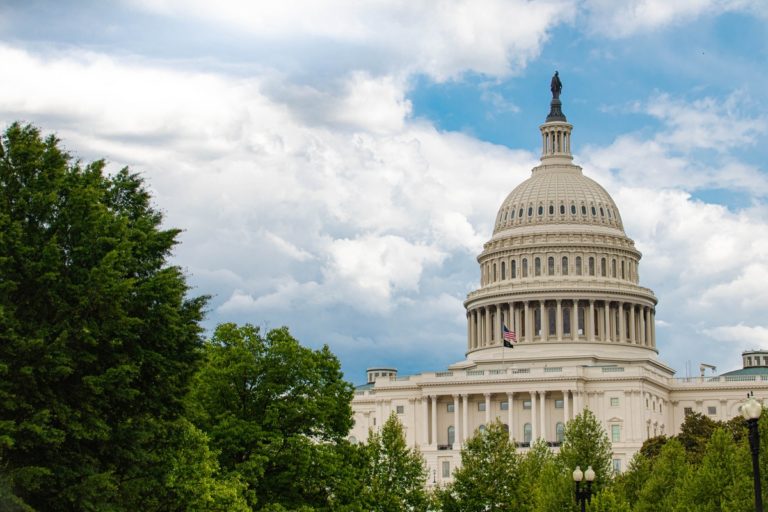We always encourage you to talk with your investment advisor if you have questions about your financial goals, how our wealth strategies may help shape those goals, or if your tolerance for risk has changed.
The last quarter saw extreme volatility with a significant upswing in the financial markets in July into mid-August, followed by a dramatic drop in equities and fixed income through the end of the September quarter. The catalyst lower was a realization by investors that inflation continues to remain elevated above expectations, coupled with the Federal Reserve signaling to expect a steady aggressive increase in interest rates until inflation is eliminated.
In the U.S., consumer inflation in September was 8.2% year-over-year after peaking at an annualized rate of 9.1% in June. Gasoline prices remain elevated, food costs have increased, wage inflation remains persistent and rents continue to rise, hence a need for the Federal Reserve to crush demand by raising interest rates. Rate increases have dramatically lowered home mortgage originations and auto financing as the cost to borrowers has increased dramatically. A 30-year fixed rate mortgage is near 7%, levels not seen since the late 1990s. We would note as consumer demand softens, supply chain issues are starting to abate as companies whose stock we own have stated holiday products arrived early this year.
Outside the U.S., Europe has seen inflation rates surge compounded by a full-blown energy crisis as the war in Ukraine continues. The sabotaging of the two Nord Stream pipelines providing natural gas from Russia to Europe is a critical event that will force Europe into a significant reset in its energy policy. China’s zero-covid policy is dovetailing with a real estate crisis, resulting in a dramatically slowing economy. China also continues its aggressive posturing towards Taiwan.
Consequently, bifurcation may evolve in areas like energy and manufacturing as supply chains fracture in many industries as the US, China, and Europe seek to protect and enhance production in key business sectors. This should lead to higher levels of inflation as companies may choose supply chain security over lower-cost supply chain efficiency.
In addition, the US dollar has strengthened significantly against most other currencies. For many countries and companies with debt denominated in dollars, the cost to pay off that debt has increased. It might be a great time for US citizens to vacation in Europe, but it is miserable for European companies required to purchase oil or LNG in US dollars. The U.K. has seen a sovereign bond crisis emerge as the value of the gilt has plunged based on recent proposed regulatory changes by new British government leaders.
In summary, the financial markets are continuing to correct. Corrections are healthy as it allows for more appropriate price discovery when looking to purchase assets. We started to see companies’ lower earnings expectations during the summer earnings season and expect that to continue during the fall earnings season. Valuations for stocks have been falling as well. Financial markets may decline even further as both valuations and earnings expectations continue to decline while interest rates rise. The valuations for real estate, individual bonds, and bond funds have not been spared having seen sharp declines. Expect a continued rocky ride for the near future and even the potential for something to “break.”
As a fiduciary, Arbor needs to make sure your money provides for the things you need. An environment of rising interest rates and consistently high inflation may require additional discussion with your investment advisor. A client should never think of a plan as locked in stone. Adjustments can always be made as circumstances change.
We would like to highlight some of the recent news and its impact on our strategies, as well as thoughts on what could lie ahead.
Arbor Capital Management Quarter 3: Wealth Strategies
Fixed Income Market
The July rally in fixed income evaporated into more selling in August and September. Bonds continue to be very correlated to stocks. The correlation has not been this high since 1996. This correlation should change over the near term if interest rates continue to rise. Rates are starting to get near the long-term return rate on stocks. Bond defaults remain low. Adjustments made in 2021 to de-risk strategies have mitigated some losses. Arbor is currently reviewing the funds we have in place and assessing potential alternatives.
With regards to our Foundations strategies, rates on safer investments are at or near the target return of many clients’ plans. There is a favorable look toward taxable and tax-free municipal bonds for both current income and future appreciation. In recent years, bonds were offered at a premium to par value. Now bonds can be purchased at discounts to par, often with modest coupons. For taxable bonds, buying at a discount isn’t an issue. For tax-free bonds, a De Minimus tax rule means some price appreciation will be taxed at ordinary income tax rates instead of capital gains rates. Despite less favorable tax treatment, these bonds can generate favorable overall returns.
With regards to Princeps allocations for our actively managed bond fund strategies, when rate hikes are finally fully priced in, Princeps might be in a position to give stock-like average returns for years with much less risk as coupons will support price and moderate downside risk. It’s more of a “when” question than an “if” question. We would note prices could go lower for months still on current Princeps investments.
For new money, the return outlook may be more favorable for Princeps than Foundations but the ability to stomach volatility may be a consideration.
Equities
Like fixed income, equity markets surged higher in July through mid-August and then retreated back quickly to their lows for the year by the end of September.
Within Global Brands – Value, energy, and consumer staples names continue to hold up well relative to other sectors. Industrials and financials have lagged in terms of performance. The lag in financials is interesting because banks are usually more profitable lending in a rising interest rate environment. Concerns about consumer and commercial losses from a potential recession have kept the stock prices of banks depressed.
Within Global Brands – Growth, we had excellent performance from two speculative technology companies we own that are preparing to ramp production of new products for utilization in the consumer, industrial and automotive spaces. If these companies execute, and there is always a risk they do not, we would expect these companies’ stock prices to move in a manner uncorrelated to the markets. We are also seeing significant declines in a couple of our mega-cap tech holdings. Earlier in the year, many of our high valuation high growth companies started to see price declines. The mega-caps are catching up in these declines.
For investors holding cash intended for equity purchases, we have generally been investing more in value stocks, as well as a few of the more speculative stocks. There has been less investment in growth stocks as valuations remain high. We originally thought the second half of 2022 would be a good time to begin significant reinvestment in growth stocks but that is not the case and we have not been material purchasers.
Real Estate Investment Trusts (REITs)
Q3 was an ugly quarter for REITs, with the broader REIT indices being down about 19%. Most of that pain (roughly 12% of the loss) came in the month of September. The office and residential sectors were among the better-performing property sectors, while data centers were among the poorest of performers. A hawkish Fed and the continual rise in bond yields remain the biggest factors in the REIT sell-off. While REIT declines are no surprises during times of rising rates, these times do present buying opportunities for long-term investors and investors with an allocation plan.
Alternative Investments
This strategy has performed well in 2022 as it has been uncorrelated to the financial markets. Both our managed futures fund and commodities fund have led the way. Investments related to merger arbitrage, S&P options trading, non-agency mortgage, and gold have also held up on a relative basis given the declines in equity, fixed income, and REITs. The one detractor has been a Bitcoin Trust ETF which has declined sharply this year.
We do not have any new information related to an additional distribution for those clients who held IQDNX. They are hoping for another distribution in the next few months, but there is no firm commitment. If you have questions related to an investment in the Infinity Q Fund which was frozen in 2021, please contact us.
Arbor Digital
Q2 was one of the most difficult quarters in digital asset history. Digital asset markets experienced a bear market rally to kick Q3 off through all the way into mid-August where Bitcoin rallied all the way up to $25,000 from a low of $19,500 and ETH posted an even greater rally reaching $2,000 from a low of $1,000. But alas it was quickly quelled by the end of the quarter with BTC basically trading flat and ETH up 30%. Further analysis of Bitcoin and Ethereum on-chain metrics like MVRV, SOPR, and NVT ratio show we are still in historical low zones. When it comes to Bitcoin and Ethereum network adoption and growth, Q3 was following a downward trend since late last year with daily active addresses, transactions, and volume all hitting pre-pandemic levels.
Despite the lack of growth in the short term, Q3 marked one of the most active and hopeful quarters in history. We realized the long-anticipated Ethereum merge on Thursday, September 15th, which transitioned Ethereum’s consensus mechanism from Proof of Work to Proof of Stake. We also got a barrage of announcements from traditional financial institutions like Blackrock, Visa, BNY Mellon, and Franklin Templeton all establishing Digital Asset infrastructure. Let’s not forget that SWIFT, which serves as the interbank messaging system that allows for cross-border payments, is working with Chainlink, a provider of price feeds and other data to blockchains, on a cross-chain interoperability protocol (CCIP) in an initial proof-of-concept.
We also saw global regulatory progress. The first regulatory reports from the US Department of Justice and Department of the Treasury were released and the European Union has finalized the full text of its landmark Markets in Crypto Assets (MiCA) legislation.
Given the uncertainty of the macro backdrop, we expect digital asset markets in Q4 to have continued volatility and behave along with risk assets. We believe this to be a blessing to allow investors to dollar cost average in and take advantage of tax loss harvesting strategies. The chess pieces are slowly getting to their positions on the board with firms establishing themselves for when regulatory clarity comes and the macro environment improves.













